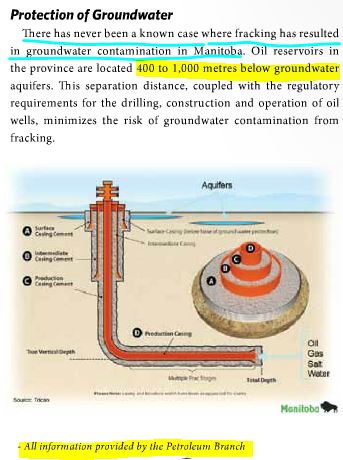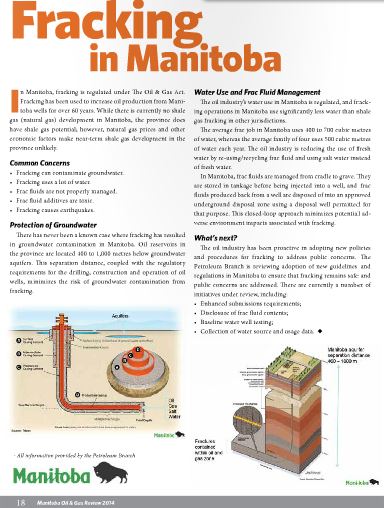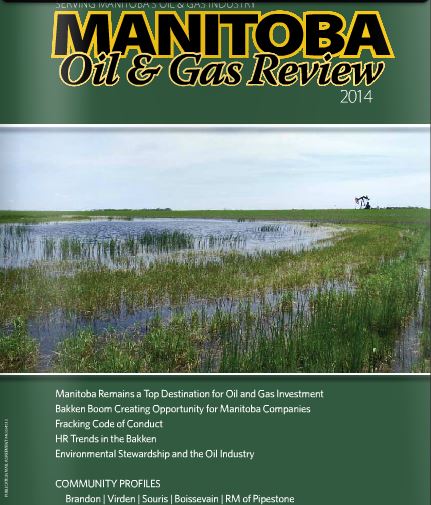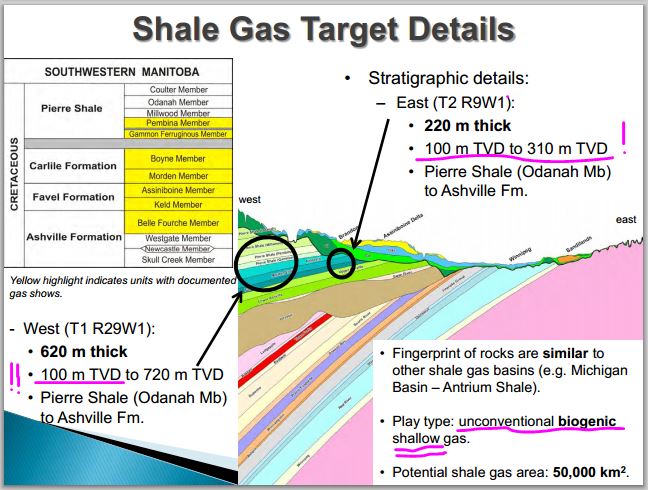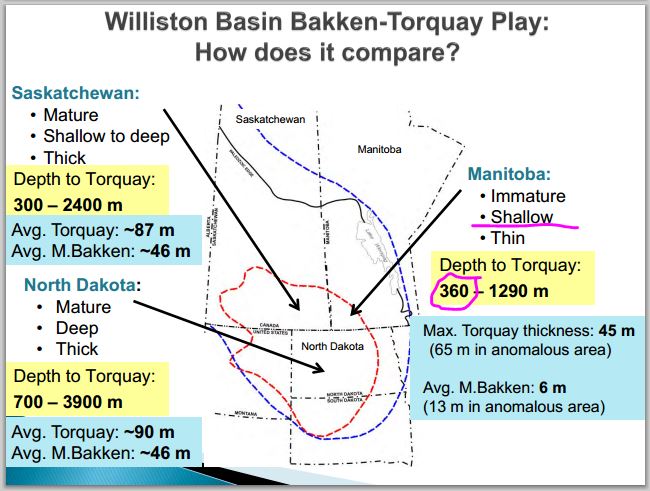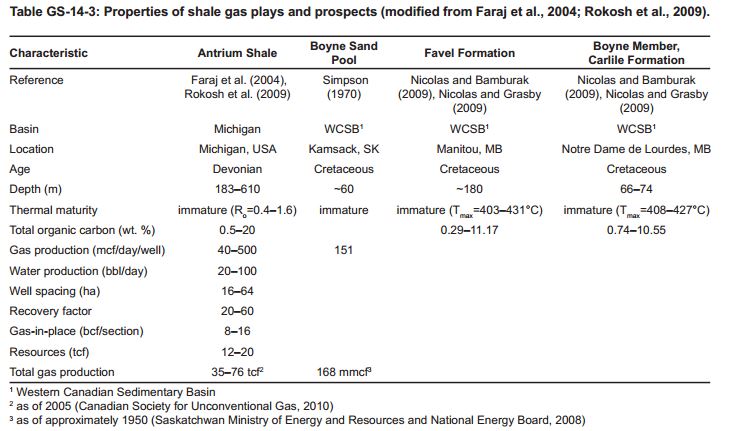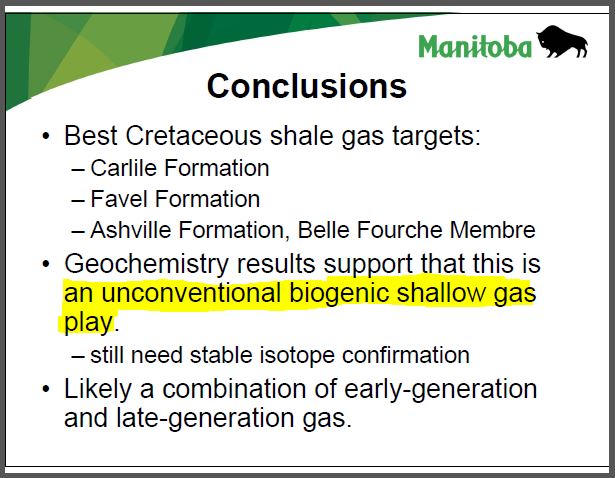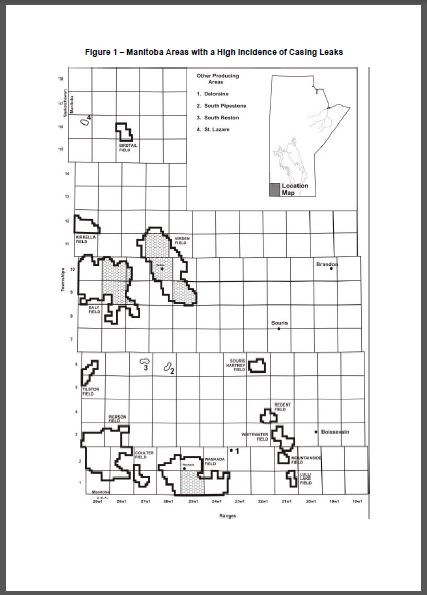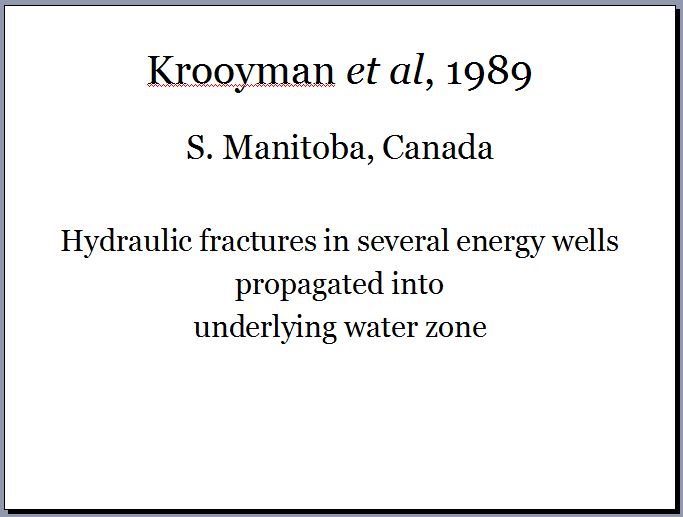Manitoba Oil & Gas Review 2014, Serving Manitoba’s Oil and Gas Industry by , 2014, DEL Communications Inc.
The Big Lie Continues: The Manitoba Petroleum Branch lies like oil and gas ministries/agencies/regulators do across Canada. From Page 19:
[Refer also to:
January 22, 2014: Alberta’s Troubling “Directive 83” Could Create Precedent for Drilling in Manitoba
July 3, 2013: Fracking on the rise in Manitoba, Not as dirty as American but regulation lacking
Above two snaps from 2012 Presentation by Michelle P.B. Nicolas and John N. Fox, Manitoba Innovation, Energy and Mines
Table GS-14-3 from Shallow unconventional Cretaceous shale gas in southwestern Manitoba: an update by Nicolas et al, 2010
Snap above from 2008 Presentation by Michelle P.B. Nicolas and James D. Bamburak
Manitoba’s Shallow Unconventional Shale Gas Project by the Manitoba Geological Survey, 2008 to current
Map from 2004 Informational Notice 04 – 02, Wells with casing leaks Manitoba Industry, Economic Development and Mines
Slide above from Ernst presentations
There are too many big companies out here now, competing for monopoly. There was adeliberate dump last year right beside a well and uphill from a nearby creek.The company left it for the creek to clean up.
Carlyle Jorgensen, Cromer Manitoba Farmer15
4. ... A 1989 peer-reviewed paper reported that“hydraulic fracturing stimulation” for light oil, in several wells in a low permeable sandstone reservoir in southwest Manitoba, propagated into the underlying water zone:
Following the unsuccessful stimulation of several wells in the South Pierson field where hydraulic fractures propagated into the underlying water zone, a comprehensive re-evaluationand detailed design effort was implemented to minimize the potential for water production. … Ideally, the hydraulic fracture created should extend laterally within the zone of interest, however, it is well known that substantial vertical fracture propagation may also occur, significantly impacting the success of the treatment. Complicating factors such as underlyingwater zones or overlying gas sections can be easily penetrated and subsequently reduce or eliminate any sought after oil production.18
5. In 2010, the Canadian oil and gas industry advertised: “Fact: Fracturing has not been found to have caused damage to groundwater resources”19 and EnCana advertised a year later: “In use for more than 60 years throughout the oil and gas industry, there are no documented cases of groundwater contamination related to the hydraulic fracturing process.” [Emphasis added]
Above text copied from:

